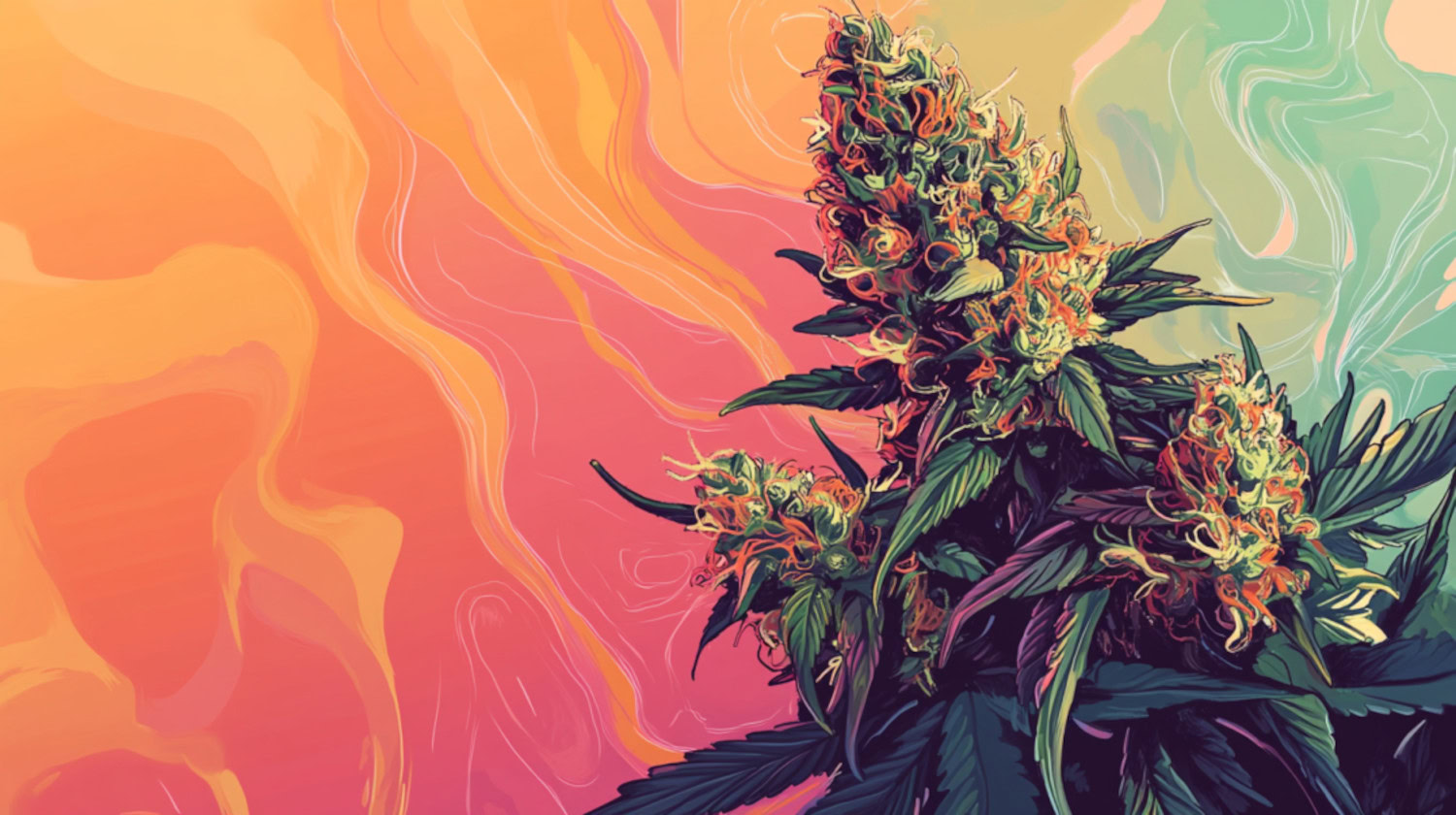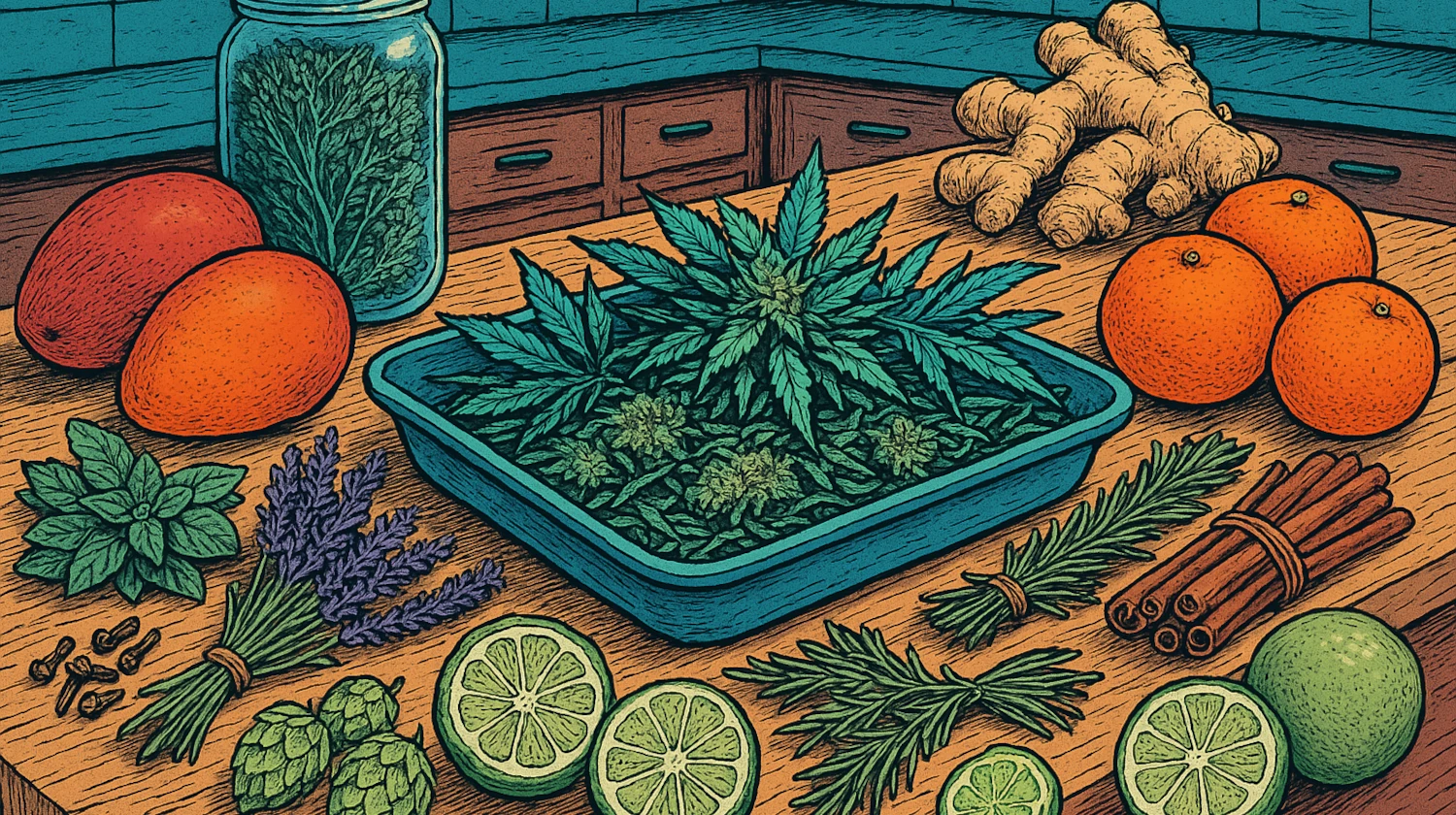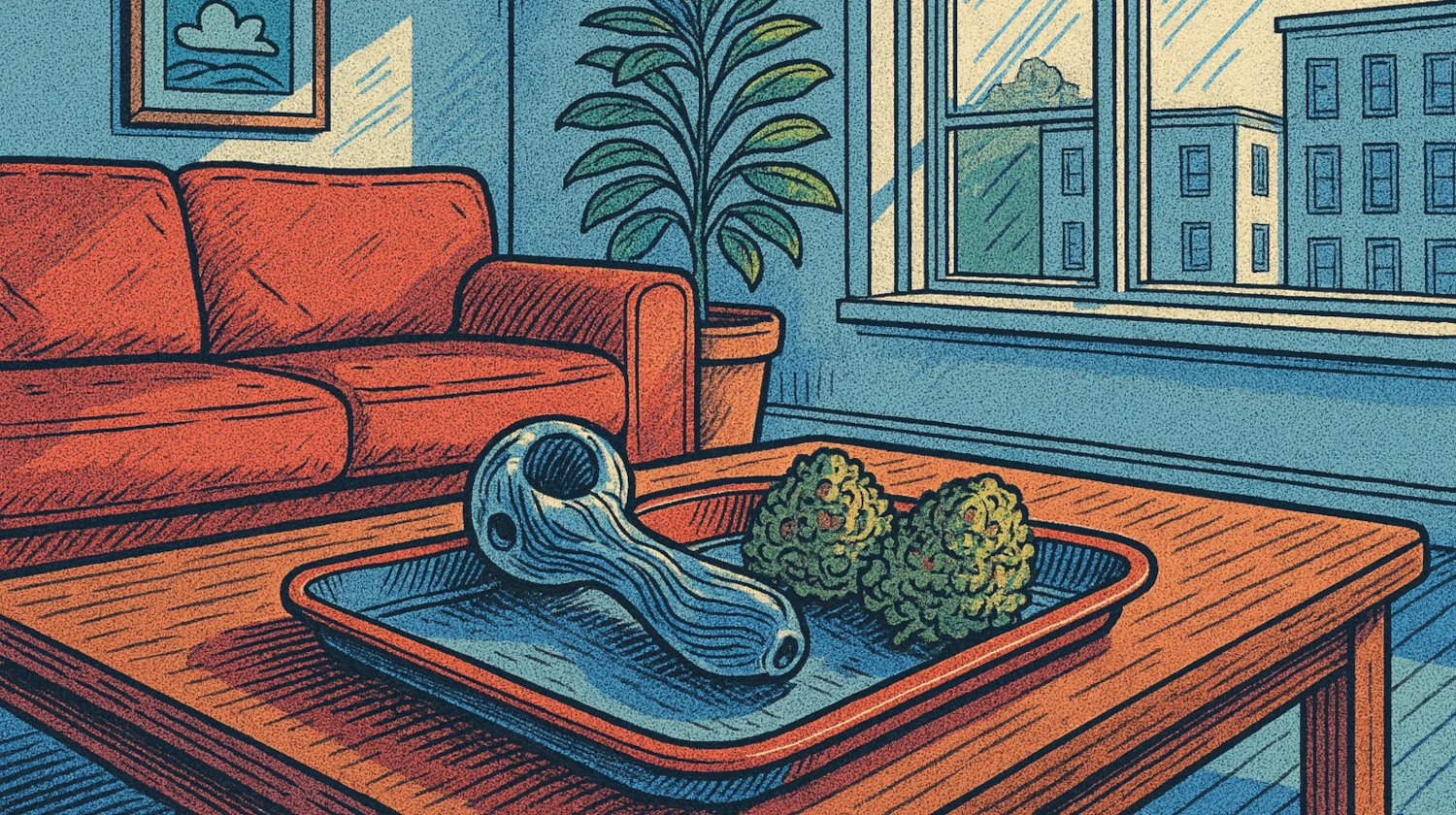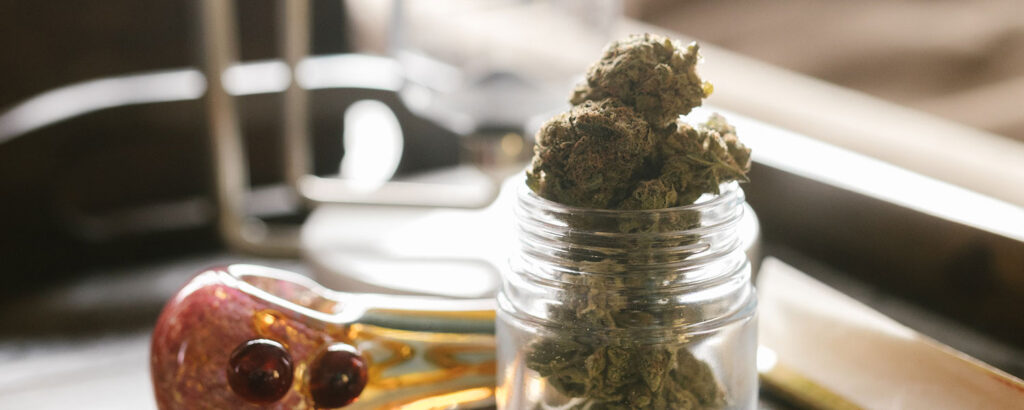Key Takeaways
- Cannabis flower is also known as weed, bud, nugs, and more.
- Many patients find cannabis flower to be an effective and economical way to use the plant.
- Cannabis flower is available as packaged buds, pre-rolls, moon rocks, and more.
For many cannabis patients, the first experience with the plant involves smoking cannabis flower. Also known by a myriad of other monikers, including weed, pot, bud, and more, cannabis flower is the dried and cured flowering parts of the cannabis plant.
Cannabis flower is the most desirable part of the plant because it is generally covered in trichomes, tiny glands that produce resin rich in active components. The resin contains cannabinoids such as THC and CBD and aromatic compounds known as terpenes, which give plants their aromas. Together, these compounds produce the psychoactive and medicinal properties that cannabis is known for.
Cannabis flower is available in several forms, including pre-rolled joints and dried and cured bud packaged in jars or bags. Cannabis flower is the basis for nearly all other cannabis products, which are produced with resin extracted from the plant material.
Cannabis Flower Anatomy
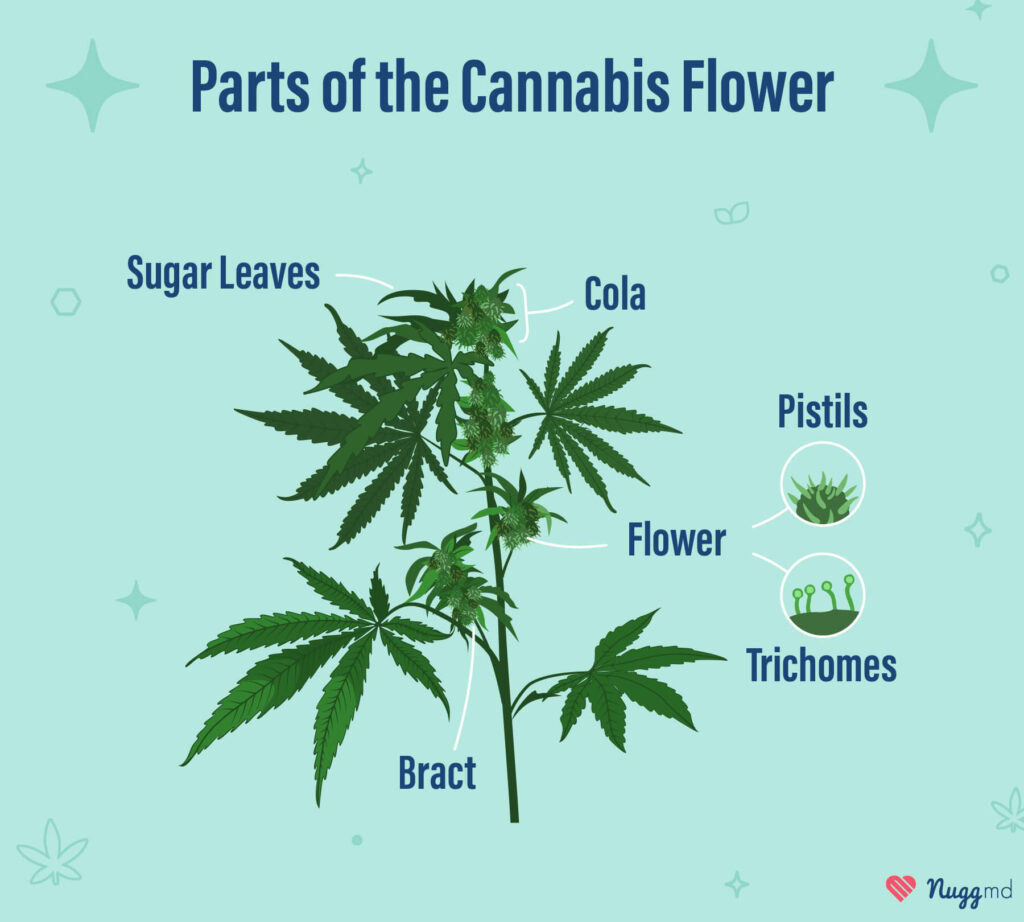
The cannabis plant comprises several distinct parts, each with unique characteristics and functions.1
- Flower: The flower, also known as the bud, is the most sought-after part of the plant. It is the plant's reproductive organ and is rich in trichomes, which produce the plant’s intoxicating effects.
- Cola: The cola is the plant's primary flower cluster. It is located at the top of the plant along the central stem, which is tightly packed with flower.
- Trichomes: Trichomes are small structures found on the surface of the flower and leaves of the cannabis plant. They produce the resin that contains the cannabis’s active compounds, such as THC and CBD.
- Pistils: Pistils are small, hair-like structures found on flowers. They are involved with the plant’s reproduction and can range in color from white to orange to red.
- Sugar Leaves: Sugar leaves are tiny leaves that grow within clusters of flowers. They are often covered in trichomes, which give them a frosty, sugary appearance. Cultivators often trim them away during the harvesting process.
- Bract: The bracts on the cannabis plant are small, modified leaves found at the base of the flower. They can be green, purple, and sometimes even red.
Cannabis flower is produced in tight clusters, commonly referred to as buds. They are generally light to dark green, although they can have shades of purple mixed with green. Cannabis flower particularly rich in trichomes can have a white or crystalline cast over the green hue, and pistils can add flecks of orange, yellow, or red.
Active Compounds in Cannabis Flower
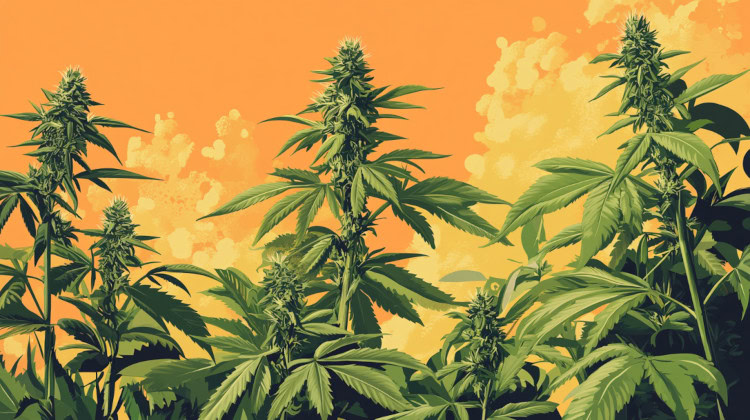
Cannabis flower contains more than 500 distinct chemical compounds, including at least 125 cannabinoids, as well as phenols, flavonoids, terpenes, alkaloids, and more, according to 2021 research.2 Among the cannabinoids, THC and CBD are the most predominant cannabinoids found in most strains of commercially produced cannabis. However, as more research into minor cannabinoids is conducted, others, including tetrahydrocannabivarin (THCV), cannabinol (CBN), cannabigerol (CBG), and cannabichromene (CBC), are gaining interest because of their potential medicinal benefits.
The non-cannabinoid compounds found in cannabis flower include at least 42 phenolics, 34 flavonoids, 120 terpenes, and two alkaloids. Terpenes, aromatic hydrocarbon compounds, have long been thought of as the primary source of cannabis’ unique aromas. Recent research, however, indicates that compounds dubbed flavorants (esters, volatile sulfur compounds, alcohols, and others) are responsible for several of the unique and diverse flavors found in cannabis.
Cannabinoids interact with the endocannabinoid system, which regulates other vital systems throughout the body. Different compounds, including terpenes and flavonoids, may interact synergistically with cannabinoids and enhance each other’s effects in a phenomenon known as the entourage effect.
Indica, Sativa, and Hybrid
For years, the cannabis community has used the terms indica, sativa, and hybrid to classify different strains of cannabis. In the past, indicas (botanically classified as Cannabis sativa subsp indica var afghanica), were shorter, bushier plants and produced denser flowers. Sativas (botanically classified as Cannabis sativa subsp indica var indica) were typically taller and had less dense flowers. Plants that are genetic crosses of sativas and indicas are referred to as hybrids.
Now, whether a plant is sativa, indica, or hybrid was also thought to influence the psychoactive effects of different cannabis strains. Indicas were commonly thought to produce a relaxed, full-body high that induced “couch lock.” Sativas, on the other hand, were believed to impart a more energetic buzz conducive to daytime use. Meanwhile, hybrids offered a combination of the two generalized effects.
In reality, most cannabis strains available today are hybrids with varied genetic parentage. The terms sativa, indica, and hybrid, however, can still be useful to describe the expected effects of a particular cannabis strain.
Today, many cannabis companies are turning away from the sativa, indica, and hybrid classification scheme in favor of a system based on the dominant terpenes expressed by particular strains. The terpene myrcene, for example, may have sedative effects, while limonene might be more mood-lifting.3 Some brands use this information to create profiles for their strains that can help patients and consumers better predict their effects and make choices to fit their needs.
How Is Cannabis Flower Used?

Smoking is the method most commonly employed to use cannabis flower, either rolled into joints or smoked with a pipe or bong. Smoking cannabis offers the quickest onset of effects, generally within five to 10 minutes of use.4 The psychoactive effects of cannabis generally last between 30 and 90 minutes after smoking, depending on several factors, including the amount smoked, the potency of the cannabis flower, and the user’s previous experience with the drug.
Many cannabis patients opt to eschew the potentially harmful effects of smoking by vaping cannabis flower instead of smoking. Using a dry herb vaporizer, cannabis flower can be raised to a temperature high enough to vaporize the cannabinoids and other beneficial compounds before inhalation. Both portable vaporizers and tabletop models are available, giving patients the flexibility to choose a device that suits their needs. Vaping cannabis flower also offers a quick onset of effects similar to smoking.
Cannabis flower is also the source of cannabinoids for other products, including concentrates, vapes, edibles, and more. Often, cannabis concentrates such as THC diamonds or cannabis oil will be added to cannabis flower to make infused pre-rolled joints, which can be far more potent than smoking flower alone.
Popular Cannabis Flower Products
Loose Cannabis Flower
Loose cannabis flower, or bud as it’s commonly known, is available in jars or mylar bags. Quantities of loose cannabis flower generally available include an eighth of an ounce (3.5 grams) and one-ounce (about 28 grams) packages.
Pre-Rolled Joints
Pre-rolled joints (or pre-rolls, as they are commonly referred) are popular with cannabis patients and consumers because of their convenience and ease of use. Pre-rolls come ready to go and only need a lighter to use, allowing patients to use cannabis without the added hassle and expense of additional accessories, such as pipes, bongs, and vaporizers.
Many dispensaries now carry cannabis flower joints that have been enriched with cannabis concentrates. These infused pre-rolls can deliver doses of cannabinoids much higher than flower alone, making them a good option for patients with higher cannabinoid dosing requirements.
Moon Rocks and Sun Rocks
Moon rocks and sun rocks are cannabis flower nugs enriched with cannabis concentrates. Cannabis buds dipped in or sprayed with cannabis oil are known as moon rocks. Sun rocks are similar, but after cannabis nugs have been coated in cannabis oil or other concentrate, they are then rolled in kief, which are loose trichomes collected from cannabis flower.
Both moon rocks and sun rocks are highly potent cannabis flower products. Patients and consumers should take particular care when using them.
Storing Cannabis Flower
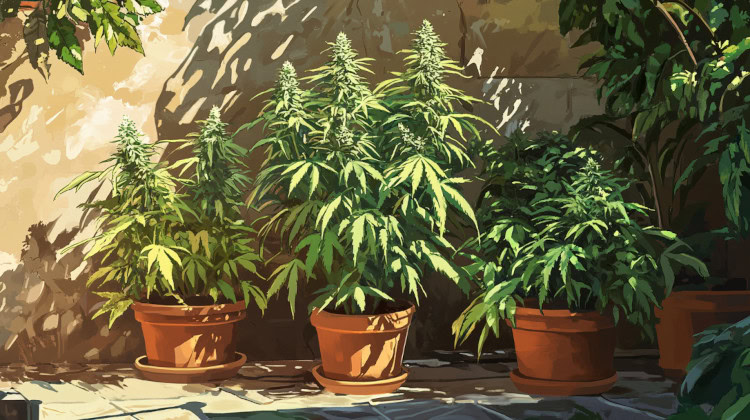
To protect the potency and preserve freshness, store cannabis flower in an airtight, light-proof container in a cool, dry place. Many dispensaries and cannabis accessories shops sell containers made especially for storing cannabis, making proper storage easy. For safety, store cannabis buds and other products out of the reach of children and pets.
Cannabis flower should be dry enough to burn easily but not so dry that it becomes crumbly. Cannabis flower that is stored before it is properly dried and cured can become moldy. Weed that has mold should not be used. For safety, discard moldy cannabis or return it to the place of purchase (if you bought it recently), if possible.
Give Cannabis Flower a Try
Many patients find smoking or vaping cannabis flower to be the most effective way to take advantage of the benefits of the plant. It can also be more economical than other products because it requires less processing than concentrates and edibles. If you haven’t tried it, pick up some cannabis flower at a dispensary near you and give it a try. Remember to start low, go slow, and follow the advice of consumers before you to have a pleasant time.
References
- Raman V, Lata H, Chandra S, Khan IA, ElSohly MA. Morpho-Anatomy of Marijuana (Cannabis sativa L.). Springer eBooks. Published online January 1, 2017:123-136. doi:https://doi.org/10.1007/978-3-319-54564-6_5 ↩︎
- Radwan MM, Chandra S, Gul S, ElSohly MA. Cannabinoids, Phenolics, Terpenes and Alkaloids of Cannabis. Molecules. 2021; 26(9):2774. https://doi.org/10.3390/molecules26092774 ↩︎
- Piomelli D, Russo EB. The Cannabis sativa Versus Cannabis indica Debate: An Interview with Ethan Russo, MD. Cannabis Cannabinoid Res. 2016;1(1):44-46. Published 2016 Jan 1. doi:10.1089/can.2015.29003.ebr ↩︎
- MacCallum CA, Russo EB. Practical considerations in medical cannabis administration and dosing. European Journal of Internal Medicine. 2018;49(49):12-19. doi:https://doi.org/10.1016/j.ejim.2018.01.004 ↩︎
The information in this article and any included images or charts are for educational purposes only. This information is neither a substitute for, nor does it replace, professional legal advice or medical advice, diagnosis, or treatment. If you have any concerns or questions about laws, regulations, or your health, you should always consult with an attorney, physician or other licensed professional.

